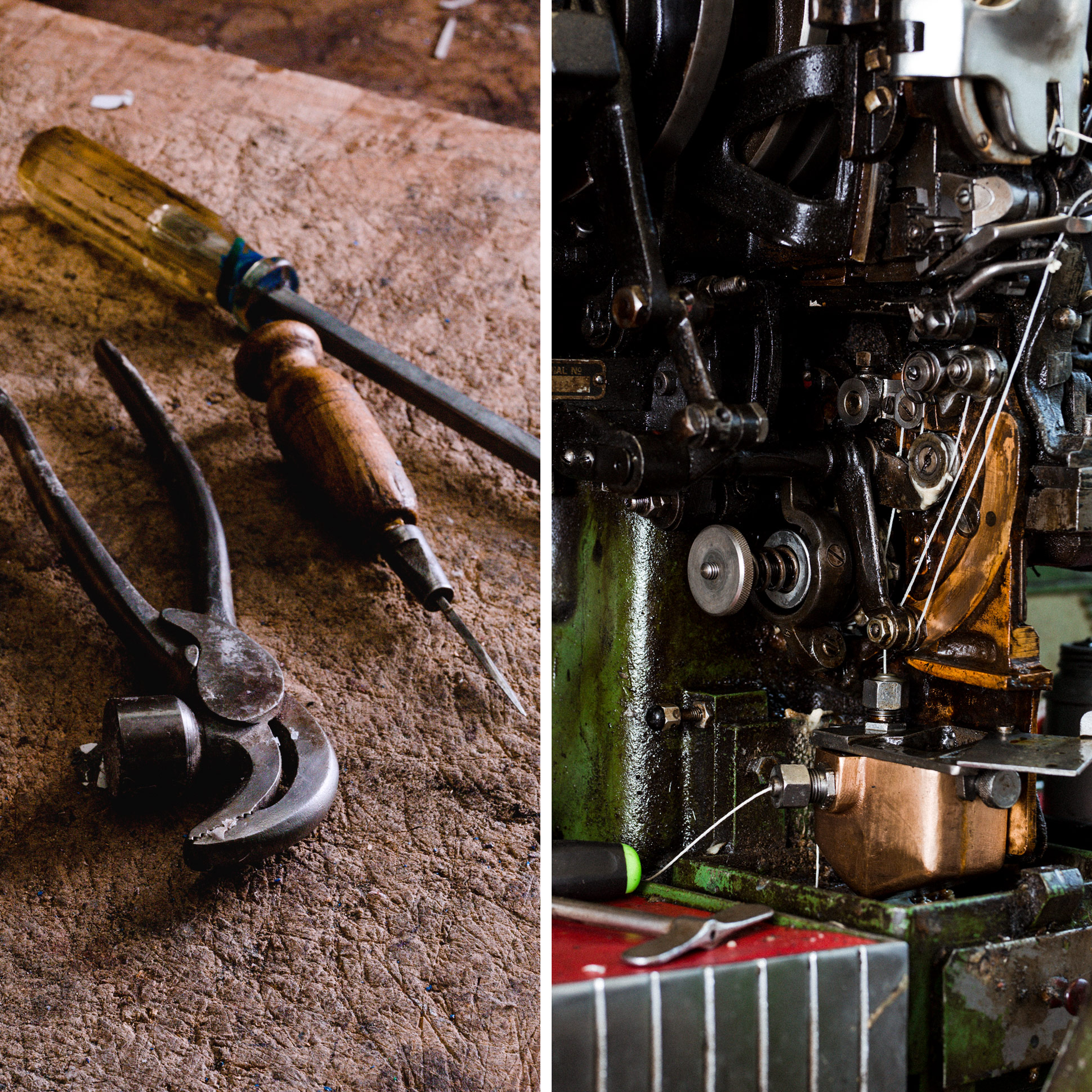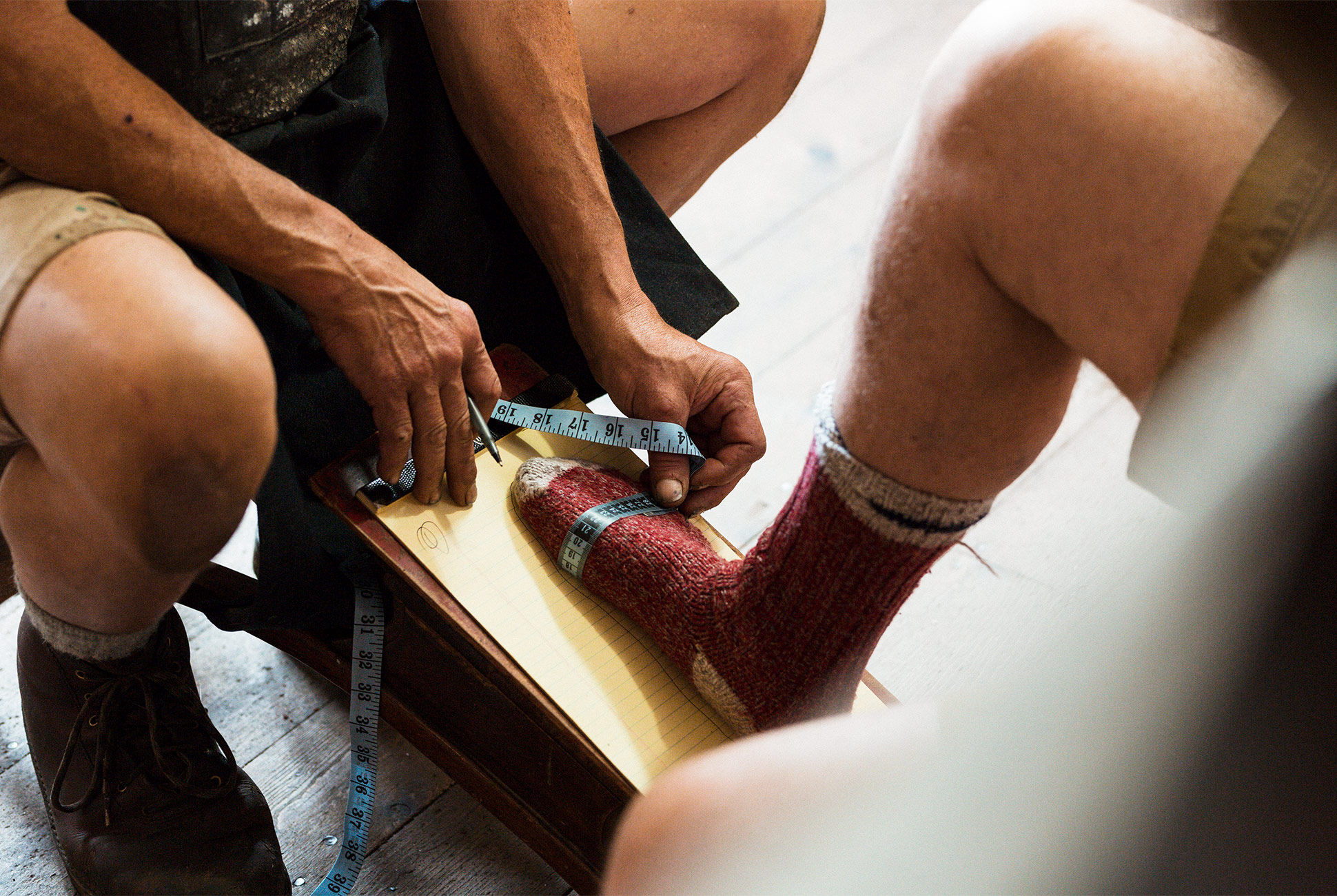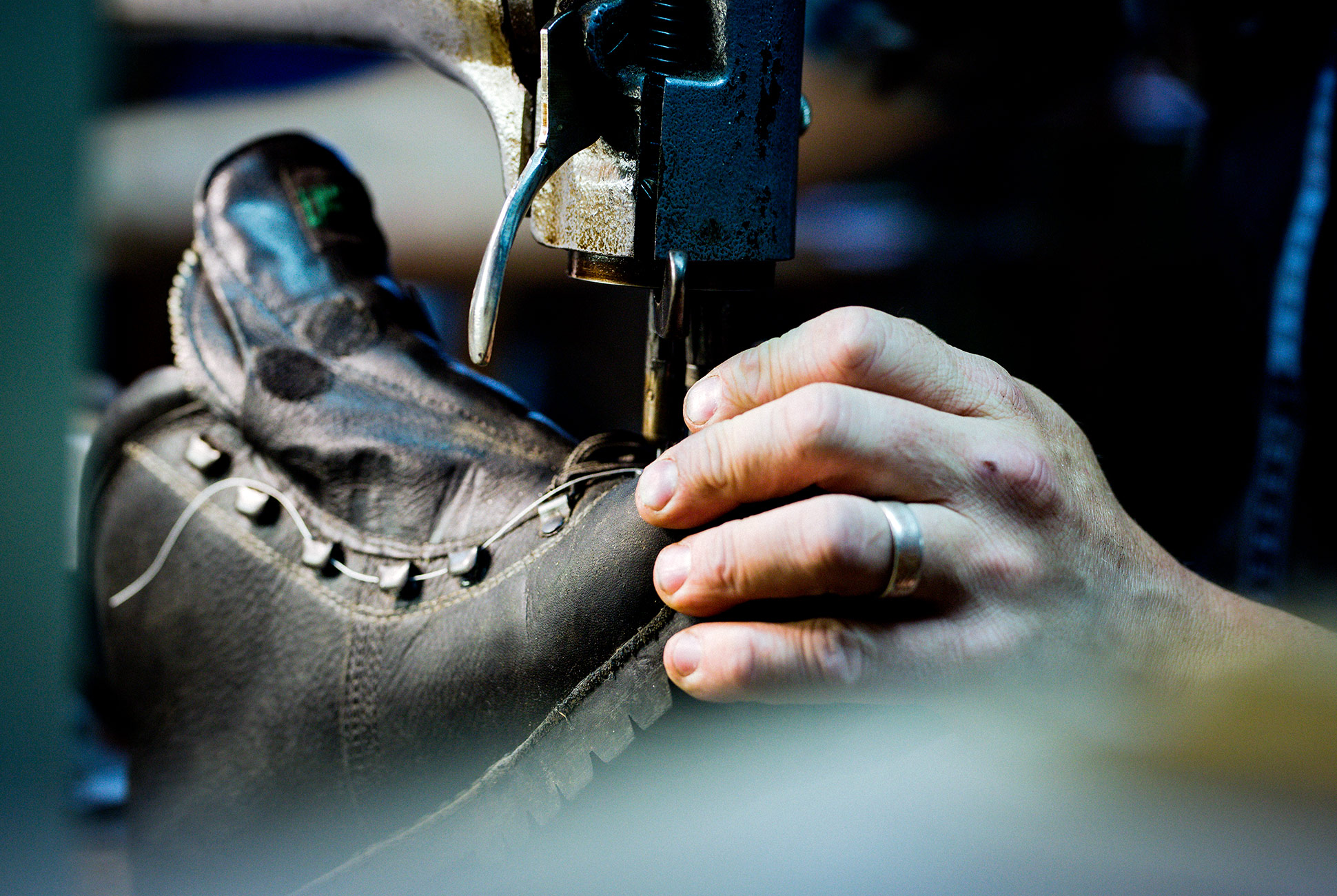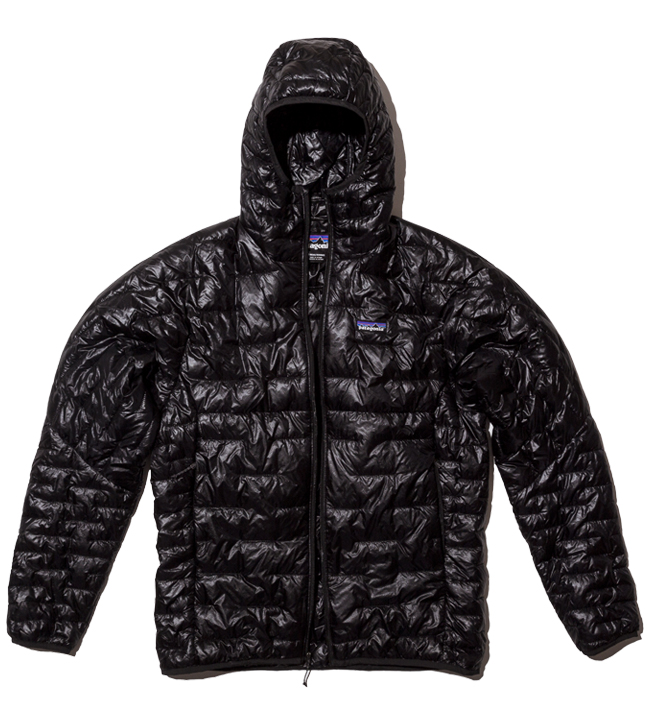From Issue Five of Gear Patrol Magazine.
Discounted domestic shipping + 15% off in the GP store for new subscribers.
R
ising up from the heart of New Hampshire, where the state’s main highway intersects the Appalachian Trail, are the woodlands and ranges of the White Mountain National Forest: a mix of rolling hills blanketed by trees and exposed ridges dominated by the cathedral of Mount Washington. Standing 6,288 feet above sea level, it’s the largest geological feature in the region, and the highest peak in New England by nearly 2,000 feet. Ever since the summit was first reached by the Englishman Darby Field in 1642, the mountain has been a lodestone and proving ground for hikers, climbers, skiers and every other elevation-seeking adventurer.
Compared to the peaks of famous American ranges like the Rockies, the Sierras and the Tetons, Washington’s height is modest. But the mountain is not to be taken lightly. For most of the 20th century, Washington’s barren summit held the record for the highest surface wind speed ever recorded — 231 miles per hour — until a tropical cyclone passed over a weather station off the coast of Western Australia in 1996. And despite its seemingly unimpressive elevation, the mountain is deadly. Washington has claimed more than 150 lives since 1849, making it statistically more perilous than Denali, which, at 20,310 feet, is North America’s tallest peak. But when the weather is fair, Mt. Washington is an idyllic backdrop for the surrounding region.
In the shadow of the mountain, 15 miles to the south, lies the village of Intervale. It’s one of those waypoint towns common in New England’s northern states: less a town, more a group of buildings along a major thoroughfare and a scattering of homes spread across a spiderweb of roads both dirt and paved. That thoroughfare is Route 302, also known in the region as the White Mountain Highway, or, deeper into the mountains, the Crawford Notch Road. And less than a quarter mile from 302 sits Peter Limmer & Sons, a decades-old, family-operated shop that makes what is possibly the most coveted hiking boot in the world.
Limmer family history doesn’t start in the White Mountains. It reaches far beyond that, across the Atlantic to the small Bavarian town of Peterskirchen, Germany, in the green hills that eventually rise into the Alps. This is where Peter Limmer Sr.’s father, the original Peter Limmer, made footwear in his small shop and founded a tradition that would span four generations and counting. Limmer Sr. eagerly followed in his father’s footsteps, earning his Master Shoemaker’s Certificate from the shoemaker’s guild on August 25, 1921 — a distinction that commanded the same respect as a university degree.
Unfortunately, Limmer Sr. wasn’t able to leverage this honor for very long. Germany’s economy was devastated after WWI; hyperinflation and unemployment were on the rise as the government struggled to make reparation payments to Western nations. The political climate wasn’t faring much better. Limmer Sr., in an effort to avoid a dire economic situation and a second war he saw as inevitable, packed up his family and left his home in Bavaria for the United States.
The Limmer family landed in Jamaica Plain, Massachusetts. Limmer Sr. immediately worked to get his trade up and running again. A certificate from the German shoemaker’s guild didn’t carry the same weight in America as it did in Europe, but the skill it signified shone clearly in the quality of the products he furnished. These included two styles of traditional European costume shoes and a hiking boot — each made by hand. The business lived on, and Limmer Sr. remained in the Boston suburb for the next 25 years.

In 1939, Limmer Sr. was awarded the sole right to produce a new piece of footwear by the United States Patent Office. The design was for, as the patent states, “a ski boot” that Limmer made from stiff leather and custom fitted to the customer’s foot. Limmer Sr. had been making these leather ski boots since his days in Europe, but the patent legitimized his work in the U.S. and gave him the important historical distinction of being the first in the country to “officially” make footwear designed specifically for alpine skiing.
The leather ski boot played an important role in getting the Limmer business to where it is today. For the elite members of Harvard’s outing club, the top-of-the-line ski boot was a status symbol. “If you didn’t have a pair of his [ski] boots, you weren’t anybody,” says the present-day Peter Limmer. But then, Robert “Bob” Lange, founder of the Lange ski boot company and creator of the plastic molded ski boots still used today, glued strips of fiberglass cut from his boat to his pair of Limmers in order to further fortify and stiffen them. It was the first pair of plastic-reinforced ski boots ever made.
Limmer Sr. quit making his famous ski boots when plastic replaced leather, narrowing his focus to costume and hiking footwear. But skiing remained an important part of the family culture. Limmer’s two sons, Peter Jr. and Francis, regularly hauled their wooden skis, often mistaken for bed slats, through Boston on their way to the nearby Franklin Park, the city’s largest public green space to this day. The brothers eventually ventured north and out of the city to New Hampshire, in pursuit of mountains. After the Limmers discovered the White Mountains, they made frequent weekend trips to hike and ski in the region, and in 1950, Limmer Sr. moved the family to New Hampshire permanently.
The mountains and woods of Intervale and the surrounding region were a virtual facsimile of Bavaria, and every member of the family felt a natural draw toward the area’s wilderness. “It’s just amazing how much it’s alike,” says present-day Limmer. “When I drive up Interstate 93, that’s just like driving into my grandfather’s hometown.” When his grandfather arrived in the area, he bought a compound of houses on 20 acres, which eventually got divvied up. The shop is the one thing that’s remained. It’s here, in the mountains of New England, that the shoemaker’s trade was passed from father to son twice over. It’s here that the current Peter Limmer — no Sr. or Jr. added — carries on making the boot his family has made for a century.
The Intervale workshop is easy to miss — its only marker is a small wooden sign — but most who visit seek it out as a destination. The barn-like building is an amalgamation of old and new; clapboards with peeling paint and a partially rusted sheet-metal roof contrast with those of the newer brewery that’s grafted to its flank. The original structure was built in 1754 as a stagecoach stop and was accompanied by a four-story inn that was frequented by President Franklin Pierce. Today, the smell of barley and yeast permeates the outer entryway, but inside, the dim workshop is all leather, oil and dust. Sounds range from the clink of a mallet striking a lace hook to the roar of an industrial-grade sander trimming excess rubber from a new sole. The shop, and the majority of the tools inside it, haven’t changed much since Peter Limmer Sr. bought it back in 1950.
Limmer is an artisan. He grew up learning how to make boots and willingly accepted the task of perpetuating the family trade. He doesn’t have a master bootmaker’s certificate because his grandfather learned firsthand that, in America, they’re insignificant. But he is a master. Limmer estimates that he’s spent roughly 86,000 hours working on boots in his lifetime; if Malcolm Gladwell’s 10,000-Hour Rule is to be believed, then that makes Limmer a master eight times over. He navigates the perceived clutter of the workshop knowingly and wields his tools with the same familiarity one might associate with taking up a fork or spoon. Hiking boots have a specific purpose, and it’s to that purpose that he works.
Limmer is also an artist. He builds metal sculptures out of old machine parts and interesting scraps encountered at the dump. That creative exploration is saved for home, though; Limmer has no plans to expand his offering with another style of boot. “I’d rather rebuild the motor in your car than make another pair of shoes,” he says. He has built some experimental footwear, but only on very rare occasions, like when he needed to test out the leather from a new supplier. There’s no reason to change or adapt the design of the Limmer Custom; the boot hasn’t changed since 1950, when Limmer Sr. moved the seam from the heel to the side of the boot, where it still is today.



The Limmer Custom hiking boot has endured because, simply put, it was built to. In appearance, the boot is simple enough: a black leather upper with a white interior welted to a sole made from a hearty chunk of Vibram rubber. (The Limmers became the first to import Vibram to the U.S. when they redesigned the hiking boot to incorporate a rubber sole instead of a metal hobnail one.) A closer inspection reveals some of the boot’s subtleties. The construction uses as few pieces as possible; the exterior of the upper is made of one uncut piece of leather — which means there’s only one seam (a natural weak point on any shoe). The boot is heavy in hand and sturdy, with leather whose exterior texture feels close to the cow skin it was tanned from, though the inside is incredibly soft and supple.
The boot-making process begins when a customer walks through the door. Without asking, and without even the slightest exchange of words, Limmer gathers details on his customer, from their natural gait to which foot is bigger than the other; the ability is innate, like a sixth sense. Then he delves further with an immediately familiar interaction. The customer sits on one of the wooden benches in the retail area, and Limmer pulls up his well-worn cobbler’s stool. The shoes come off. Limmer’s voice drops from its normal boisterous baritone to a softer tenor. He gathers more details about the customer’s walking and hiking habits and traces the outline of the customer’s foot onto a standard yellow legal pad. He takes an array of circumference measurements and jots them down. Like a doctor, Limmer is methodical and direct. The entire process takes no longer than five minutes.
That yellow paper, and the measurements it holds, is just one page in Limmer’s guide to making the custom boot. Limmer has reams of these foot tracings in filing boxes stacked floor to ceiling in a corner of the workshop. Some pages go back 40 years. Each sheet is a map for constructing what’s called a last: a model of the customer’s foot, around which the boot is constructed. The last has to be a near-perfect reproduction of the foot in order to achieve the perfect custom fit that Limmer, like his father and grandfather before him, guarantees. There is no room for mistakes. “If it’s not right, there’s no sense in going any farther,” says Limmer. His allowance for error is two millimeters — roughly the thickness of a vinyl record.
“Reading the leather is just like reading wood when you split it.”
Limmer estimates that 10 percent of the workshop’s total floor space is devoted to a library of lasts, and that doesn’t include the storage container at his home. He has made thousands of them over his tenure. Most are made from wood; some are nylon; all contain a metal hinge that mimics the bending of a foot as it enters a shoe. To build a custom last, Limmer starts with one that’s a size smaller than a customer’s foot. He uses a moldable high-durometer rubber that softens with heat and hardens when cooled in order to sculpt a model that contains all the nuances of the customer’s foot. It’s the trickiest part of the entire boot build — and the most important.




Once the last is complete, the boot can then be constructed around it. Limmer makes the upper first, layering it on from the inside out: soft oak-tanned leather, then the black, nigh-impenetrable chromium-tanned leather. Chromium, which is otherwise used as a coating for products like car bumpers and is a key ingredient in stainless steel, tightens the leather, making it more dense and resistant to puncture and dents. The resulting sturdiness provides the structure and support the boot is known for. “Reading the leather is just like reading wood when you split it,” says Limmer, noting that each piece can behave differently.
After the layup of leather is created, the other pieces are punched, stitched and sewn. The tongue is inserted, the hardware is punched, the heel pad is glued and the styrene toe cap is put into place. The leather, wetted with an alcohol solution, can be stretched over the other layers, as well as the last, before it’s stitched to the sole. The entire process takes roughly 40 hours and Limmer typically works on 12 pairs of boots at a time. If the process sounds slow, that’s because it is. Limmer estimates his output during an especially productive year to be between 150 and 175 pairs of boots — or, as he’s fond of saying, “What Nike does by coffee break.”
Because of Limmer’s backlog of orders, the time between that initial legal-pad fitting and the beginning of production currently hovers at roughly two years. The price tag is also high; custom boots start at $750. For many, the wait and cost would be unsurpassable barriers to entry. But despite that, the wait for a boot has never fallen below a year. It’s most functional to keep it around two years, but he admits it’s been as high as four. Once, a customer offered Limmer $10,000 to be placed at the top of the list.
“I started laughing,” he recalls, “but he wasn’t joking.” Limmer turned him down. That’s not how it works.
Limmer’s okay with the fact that he isn’t supplying his boots to everybody who wants a pair. “Our boot’s not for everybody,” he acknowledges, fully aware that the heavy-duty hiking footwear — and the rigorous break-in period that can take weeks or even months — simply isn’t suitable for every pair of feet. In fact, Limmer is likely to dissuade someone from buying the boot if he doesn’t think it would be appropriate for them. He also has a keen eye for collectors, people who might view a pair of Limmers as a luxury item or a status symbol — and he’s not afraid to turn them away. “With two years’ worth of work, why make a pair of boots that are going to sit in a closet?” he says.
It’s not about the money; that much is clear after only a few moments in the workshop. If it were, Limmer would’ve sold the brand years ago. He would’ve given up when he had to switch from a European tanner to one in Chicago, or any of the times the massive green Landis stitching machine decided to quit on him. To understand what it is about, one simply has to visit the workshop. It’s about the customers whose photos cover the walls of the fitting area: photos of Limmer boots on summits just a few miles up the Notch Road and as far away as Kilimanjaro; photos of boots near iconic trail signs; even photos of grooms in suits and brides in white dresses, both with black boots on their feet. (“Our boots have outlasted probably seventy percent of the marriages,” Limmer quips.) It’s about the boots, and the heritage embedded in their seams.
“I was never talked into or pushed into the business, so I never did that with my kids.”
Until recently, that tradition was uncertain. Limmer has two sons in their late twenties. They’ve both spent time in the workshop learning the trade, but after attending college, they decided to enter the lucrative landscaping and timber businesses. “Their intentions at one point were certainly to come in here,” Limmer says without remorse. He’s happy to see them forging their own paths and finding success doing so. “I was never talked into or pushed into the business, so I never did that with my kids. They understand the uniqueness of the business.”
Limmer found himself without a familial heir to help out in the workshop and carry on the business. But luckily, he had taken on an apprentice. Before taking up boot making, Ken Smith was employed at a pet store. He put his heart into the craft and worked alongside Limmer for 18 years. Then Smith, who is older than Limmer, reluctantly decided to retire, and the future of the business became uncertain again. Limmer’s oldest son offered to take over when he was too old to haul timber. But at that point, Limmer feared he’d be too old to teach him. A retired lawyer from Connecticut offered to work as an apprentice, but was unwilling to take over the business when Limmer decided to call it quits; he suspected she just wanted to mine the master for his skills. “I was starting to think that this was going to be the end of the business,” he says.
In preparation for the worst, Limmer confided his apprehension in his local bank manager, Adam Lane-Olsen. “He started talking about how his boys were not really into the business,” says Lane-Olsen, “and how he wasn’t quite sure how things were going to end up.” Lane-Olsen, who holds a graduate degree in historical theology, had worked numerous jobs in numerous states before landing at the bank in New Hampshire. The White Mountains were right, and the money was sufficient, but he wasn’t happy. “[Managing a bank] is probably for some people, but it sure as hell isn’t for me,” he says. “It was killing me.”
When Lane-Olsen heard Limmer’s doubts, his disquiet reignited in response to a perceived opportunity. A week later he approached Limmer about an apprenticeship. “You could tell he wasn’t really sure. I was the bank guy,” he says. Three months later, he quit his job at the bank in order to apprentice in what many would consider to be a dead trade.
“I’ve never worked on boots before. But it just felt right,” Lane-Olsen says. “When I first walked into the workshop, there was something about it.” When asked if he recognizes the significance of his commitment to perpetuating the Limmer tradition, Lane-Olsen is firm in his response. “I don’t look back for a second.”

What happens in Intervale, New Hampshire, at the Peter Limmer & Sons workshop goes against every characteristic of the outdoor-footwear industry today, and it’s because customers know what they’re getting: durability, longevity, character, history, tradition. These qualities define the boots and the motivation and process that produce them. They define the workshop itself, and are made tangible by Peter Limmer Sr.’s ski boot patent and master bootmaker’s certificate hanging framed on the shop walls. It’s these things that bring customers whose grandparents wore Limmer boots to the shop to get themselves a pair of boots, or to fix up the pair that’s been passed down through their own families. Limmer boots are a rare example of heirloom footwear: They’re never broken — just beat up, and always repairable.
Every so often, a customer walks through the shop’s screen door with a pair of decades-old, worn-out boots made by Peter Limmer Sr., which Limmer identifies immediately. “You can feel him in there,” Limmer says quietly. It’s not just him, either. “I came in here one day and Adam was a little bit ashen,” Limmer continues. “I looked at him and said, ‘What’s up?’ And he goes, ‘Man, there’s just weird shit going on here.’” Lane-Olsen was working on a pair of boots that were made in the Jamaica Plain workshop back in 1948. Limmer’s solution, whenever he feels his grandfather’s presence in the shop, is to crack open a can of Opa — an Oktoberfest beer made at the brewery next door, and salute him. “He’ll take off,” Limmer says. Coincidentally, Opa, German for “grandfather,” was Peter Limmer Sr.’s nickname. Opa was a big beer drinker.
Whether the ghost of his grandfather shows up or not, Limmer isn’t opposed to cracking open a beer at the end of the day. It complements the genial atmosphere and unbuttoned pace of life in the workshop. Notably, the thoughtful process of the boot making, however slow, overrules any motivation for expansion and profit. “I love the fact that it’s laid back,” Limmer says. “I generally don’t walk out of here pissed off. I walk out of here ready to go do something, give it my best, because my day was fun. A lot of people don’t understand that. That’s important to me.”
The ultimate guide to hiking footwear. Read the Story




